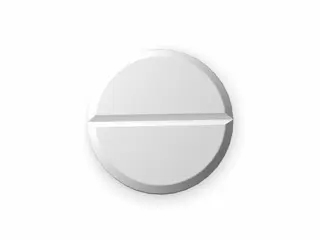Shop Clonidine Online in the USA
| Package | Dosage | Price | Price per Dose | |
|---|---|---|---|---|
| Dosage: 100mcg | ||||
| 270 pill | 100mcg | $431.65 | $1.60 | |
| 180 pill | 100mcg | $317.84 | $1.76 | |
| 120 pill | 100mcg | $231.78 | $1.93 | |
| 90 pill | 100mcg | $191.53 | $2.12 | |
| 60 pill | 100mcg | $145.73 | $2.43 | |

Clonidine Description
Overview of Clonidine
Clonidine is a medication primarily used to manage high blood pressure. It belongs to the class of drugs known as alpha-2 adrenergic agonists. By acting on specific receptors in the brain, it helps to relax blood vessels, making it easier for blood to flow through the body. In addition to its primary use for hypertension, Clonidine is sometimes prescribed for other conditions such as ADHD, opioid withdrawal symptoms, and certain types of pain. Its versatility makes it a valuable tool in various medical settings.
How Clonidine Works
The mechanism of Clonidine involves stimulating alpha-2 receptors in the central nervous system. This stimulation leads to a reduction in the levels of norepinephrine, a chemical that causes blood vessels to constrict. With less norepinephrine, blood vessels relax and widen, resulting in lowered blood pressure. Because of its central action, Clonidine can also influence nerve signaling, which explains its use in managing withdrawal symptoms and attention-related disorders.
Benefits of Clonidine
Many patients find Clonidine effective in controlling their hypertension. It can be used alone or in combination with other antihypertensive medications. Its quick onset of action provides rapid blood pressure reduction, which can be crucial in emergency situations. For individuals with ADHD, Clonidine can help improve attention span, reduce impulsivity, and promote better sleep. In opioid withdrawal therapy, it eases symptoms such as sweating, anxiety, and agitation, making the detox process more manageable.
Possible Side Effects and Precautions
Like any medication, Clonidine may cause side effects. Common issues include dry mouth, dizziness, drowsiness, and fatigue. Some users might experience headaches or constipation. More serious but less frequent effects include low blood pressure, allergic reactions, or a sudden rebound increase in blood pressure if the medication is stopped abruptly. It is important for patients to follow their healthcare provider’s instructions carefully and not to discontinue use suddenly without medical guidance. Regular monitoring of blood pressure and other health parameters is recommended during treatment.
Usage and Dosage
Clonidine is available in several forms, including tablets, patches, and injections. The dosage depends on the condition being treated, the patient’s response, and other individual factors. For hypertension, it is usually started at a low dose with gradual adjustments. The patch form is often used for convenience and to ensure steady medication levels. Patients should adhere strictly to the prescribed dosing schedule and inform their doctor about any adverse effects or concerns.
Final Thoughts
Clonidine remains a versatile medication with proven efficacy in managing high blood pressure and other conditions. Its central mechanism offers a different approach compared to other antihypertensive drugs. However, user awareness about potential side effects and proper usage is essential for safe and effective treatment. Patients should maintain regular communication with their healthcare provider to optimize benefits and minimize risks associated with Clonidine therapy.


